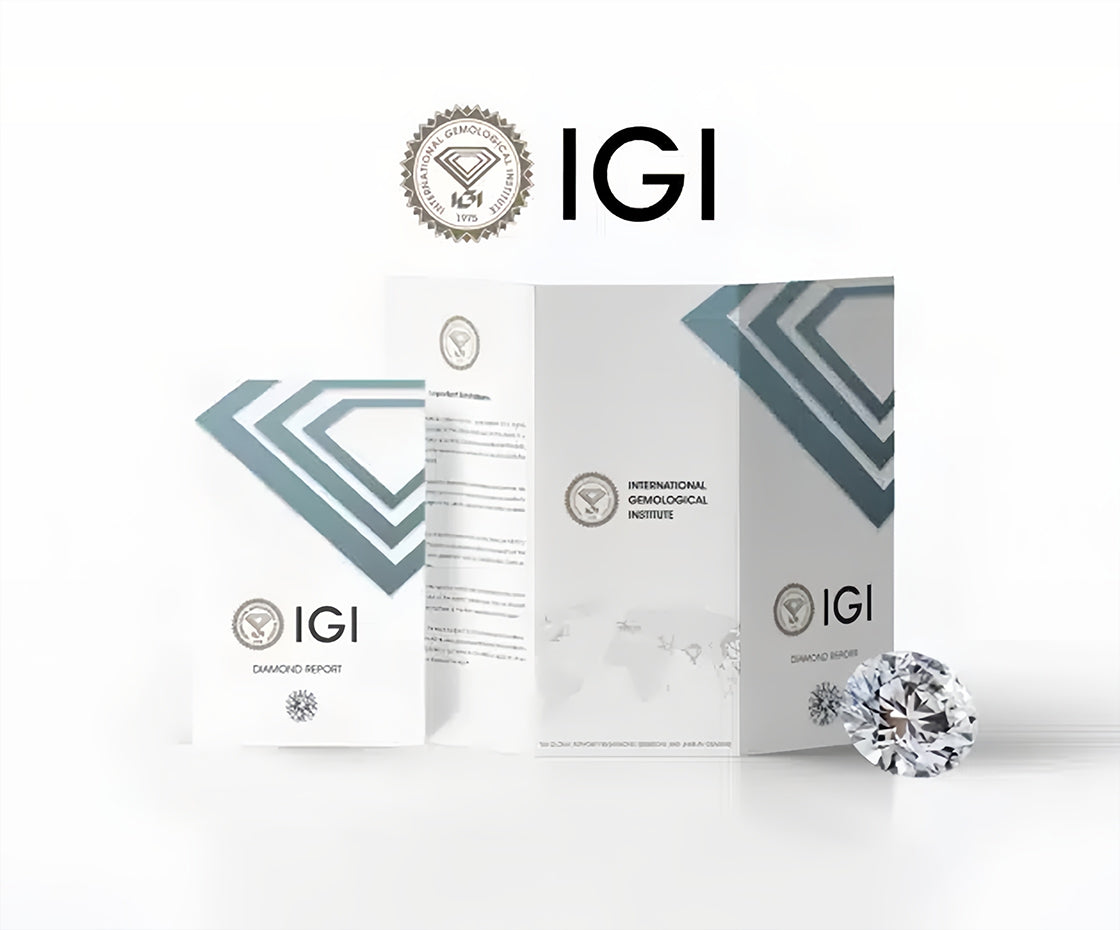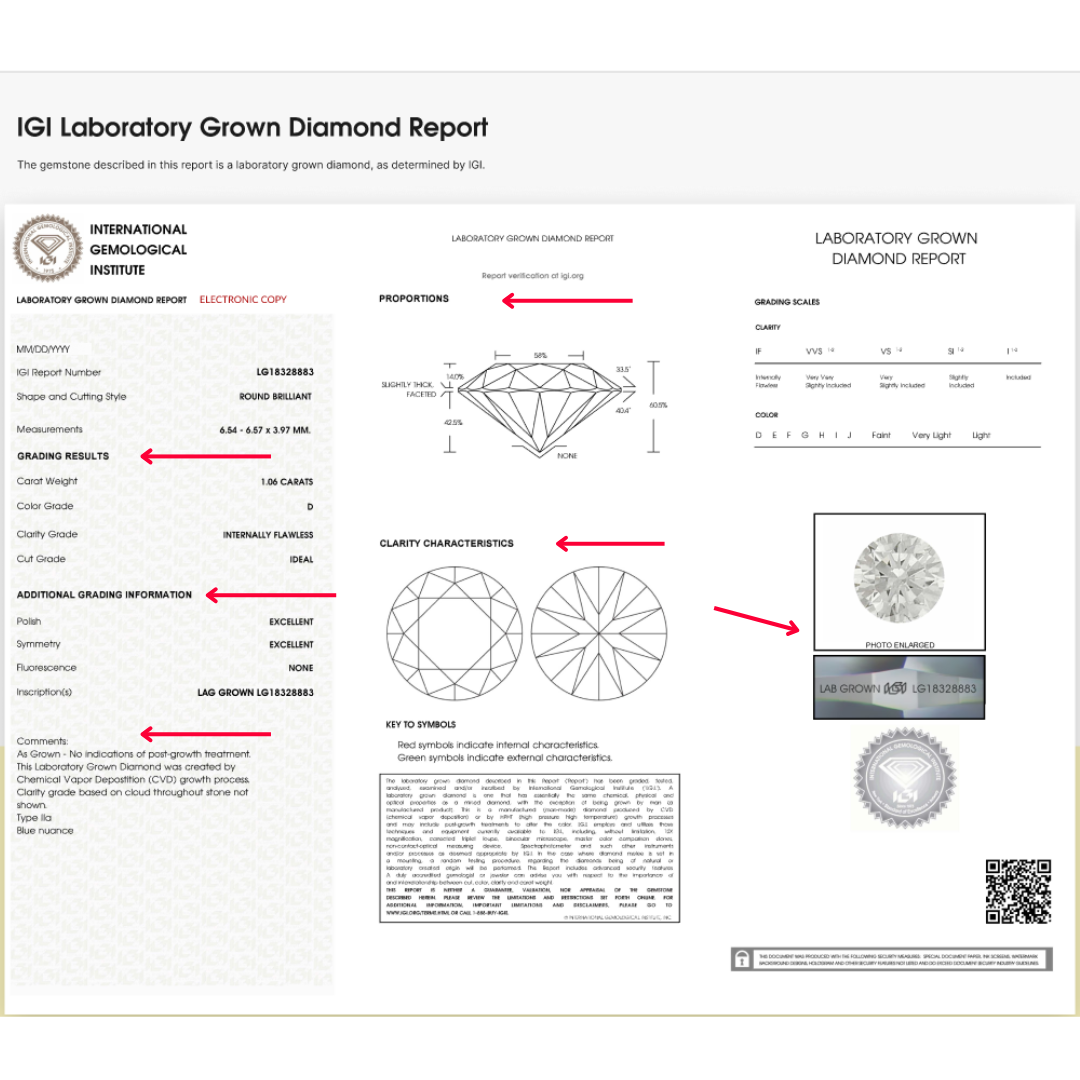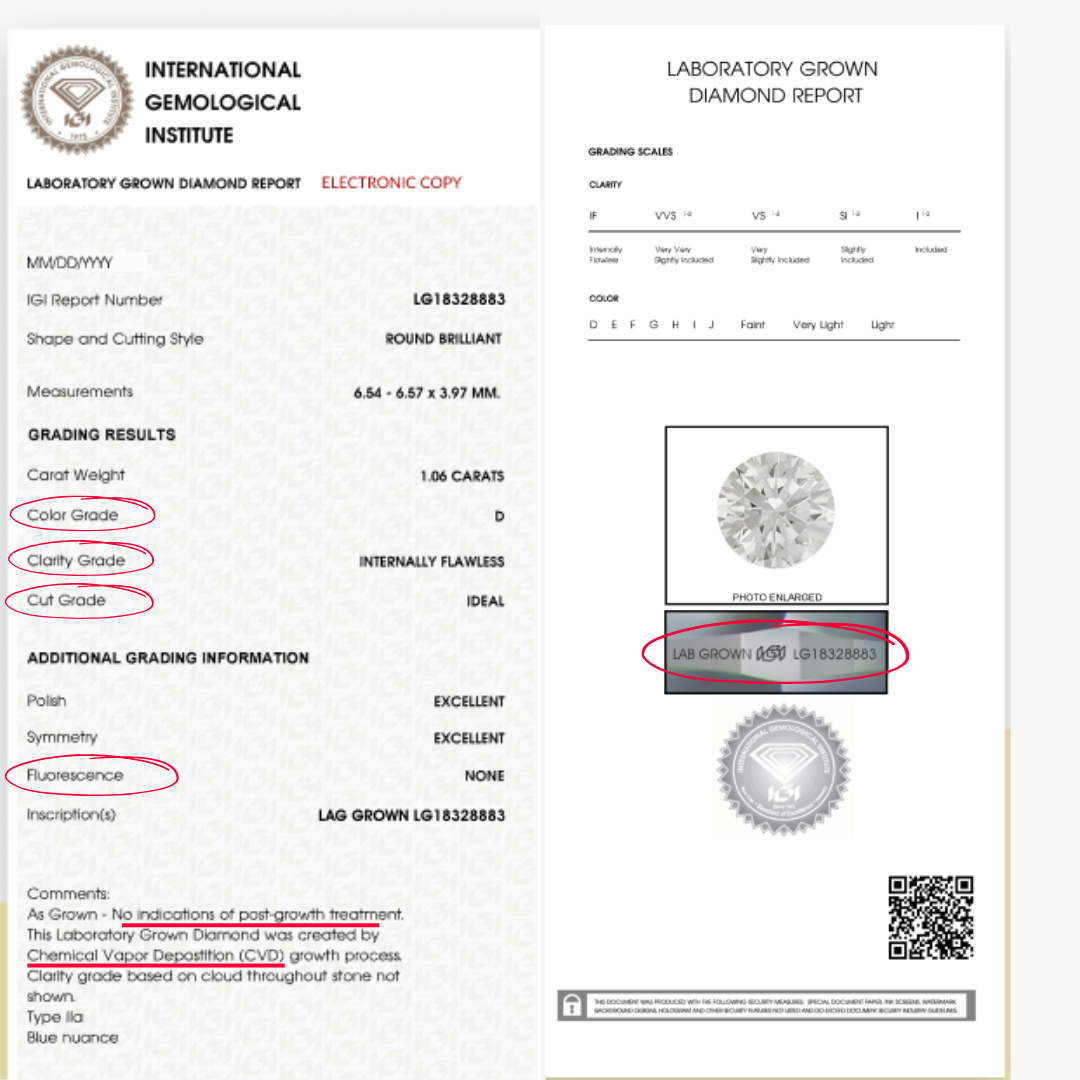IN THIS GUIDE:
- What Is an IGI Lab-Grown Diamond Report?
- What’s Inside an IGI Report?
- What You Really Need to Check
- Why IGI Over GIA for Lab-Grown Diamonds?

What Is an IGI Lab-Grown Diamond Report?
Think of it as your diamond’s passport.
An IGI lab-grown diamond report is an official document that verifies a diamond’s identity and quality. It’s issued after the diamond is graded under strict lab conditions, evaluating its 4Cs (cut, color, clarity, carat), growth method, and more.
IGI is one of the world’s most trusted diamond grading labs, especially for lab-grown diamonds. While the GIA is more known for natural diamonds, IGI has become the go-to for lab-grown certifications because they were one of the first major labs to adopt rigorous standards for them.
What’s Inside an IGI Report?
Here’s what you’ll typically find in a certified IGI lab-grown diamond grading report:
1. Identification Info
- Report Number – A unique ID you can verify online
- Date of Issue – When the grading was done
- Shape and Cutting Style – E.g. Round Brilliant, Oval Modified Brilliant
You can verify your diamond’s report on IGI's website here.
2. The 4Cs: Carat, Color, Clarity, and Cut
This is the heart of your diamond’s identity.
- Carat Weight: The diamond’s size, measured to the hundredth decimal.
- Color Grade: Ranges from D (colorless) to Z (light tint). Lab-grown diamonds often fall between D–H for that icy sparkle.
- Clarity Grade: How clean the diamond is. We only offer VVS and VS clarity, clean to the eye, with minimal inclusions.
- Cut Grade: Arguably the most important. It controls how much light your diamond reflects (a.k.a. sparkle). Always look for “Excellent” or “Very Good” here.
3. Additional Grading Details
- Polish: Surface finish. “Excellent” is best.
- Symmetry: Alignment of facets. You want “Excellent” or “Very Good.”
- Fluorescence: How the diamond reacts under UV light. "None" or "Faint" is ideal for most buyers.
4. Proportions Diagram
This section shows your diamond’s physical measurements and proportions:
- Table % and Depth % – These affect light performance.
- Crown and Pavilion Angles – The angles of the top and bottom of the diamond.
- Girdle and Culet – Edge thickness and bottom point.
Tip: Shallower cuts may face up larger, but deeper ones may sparkle more. Use this section to compare apples to apples.
5. Clarity Plot & Comments
This is where IGI maps out any inclusions or blemishes your diamond has, kind of like a fingerprint.
- Symbols show the type of inclusion: feather, crystal, pinpoint, etc.
- Growth Method: Usually CVD or HPHT for lab-grown. Both are great. But the report will note any post-growth treatments, which can affect value.
6. The Inscription
Most IGI-certified lab-grown diamonds come laser-inscribed with the report number right on the girdle (the edge of the diamond). This helps match the physical stone to its paperwork.
Check it using a 10x loupe or ask your jeweler to show it to you.


What You Really Need to Check
When reading your report, here are the 5 things we recommend paying closest attention to:
- Cut Grade – A “Very Good” cut or better = sparkle you’ll notice.
- Color – D to H offers that crisp, white look.
- Clarity – Stick with VVS or VS—eye-clean and brilliant (we’ve done that part for you).
- Fluorescence – “None” or “Faint” is best unless you're after a very specific look.
- Growth Method & Comments – Look for untreated CVD or HPHT.
- Laser Inscription – Confirms that the diamond matches the report.
Why IGI Over GIA for Lab-Grown Diamonds?
Here’s a quick comparison:
| Feature | IGI | GIA |
|---|---|---|
| Focus | Natural & Lab-Grown | Primarily Natural |
| Cut Grade Included? | Yes | Not always for lab-grown |
| Clarity Consistency | High | Very High |
| Turnaround Time | Fast | Slower |
Note: IGI was one of the first to fully embrace and rigorously grade lab-grown diamonds, making them the go-to choice for modern buyers.
Shop IGI-graded Diamond Jewelry
FAQs
Go to igi.org/verify-your-report and enter the report number.
IGI is the most commonly used and trusted lab for lab-grown stones. GIA is more natural-focused.
Both are lab-grown methods. HPHT mimics earth conditions; CVD grows from carbon vapor. Your report will specify which.
Yes. IGI grades are highly consistent and reliable, especially when verified.
About the Author: This guide was written by Oggi, our jewelry expert. She has over 10 years of experience in precious metals and gemology.
Our team regularly consults with master jewelers and metallurgists to ensure we provide the most accurate, up-to-date information on jewelry metals and trends.
Last Updated: May 2025





